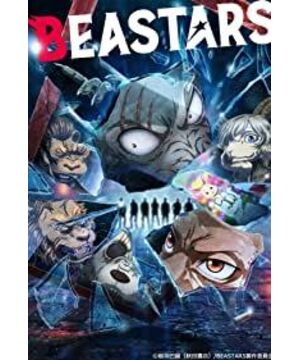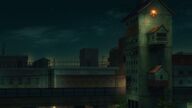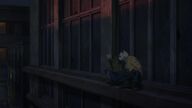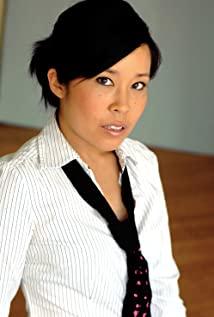After 12 weeks of chasing "Beastars", it is finally over, and I can confidently come to Amway, an animation that has been on my list of Amway since the first episode.
"beastars" is a compound word created by the original author, namely "beast" + "stars", which can be understood as "animal star", which is an animal recognized at a certain event in the work. It is not difficult to see that the protagonists of this work are anthropomorphic animals. Part of the setting of the work is similar to "Zootopia", where carnivores and herbivores "peacefully" coexist in a civilized society. However, the publication time of the original comics was actually earlier than "Zootopia" was released in Japan, and the settings of the two works should have originated from independent creation. Despite the similar background, the core of the two works is quite different: the carnivores and herbivores in "Zootopia" no longer have the relationship of predation and prey, and the work focuses on power struggle and political allegory; while "Zootopia" Beastars opens with a herbivore killed by a mysterious carnivore. Herbivores suffer from their own vulnerability and fear, while carnivores struggle with instinct and civilization. This is a typical Japanese "growth" work about self-knowledge and social relations.
The original manga is very popular in Japan, but as a non-original party, the question that always haunted my mind when I first started watching this animation is: why? Why do carnivores have to suppress their carnivorous nature and succumb to the shackles of so-called "civilization"? From the perspective of the real world, carnivores and herbivores are based on the genetic code and nutritional structure of materialism, and can even be demonstrated by the population theory of ecology. However, the focus of an anthropomorphic group of animals is naturally not the animals themselves, but can only fall back on people themselves. Cruel meat appetites should point to sexual viciousness, violence, and the devouring of the weak by the strong. Thinking of it this way, the setting of the work can be accepted as a matter of course.
Okay, after a long time to set up, I have to go back to the title and talk about the crazy love of this "Wolf and Rabbit". Since it is a society where all kinds of animals live together, love is naturally indispensable in its social relations. Like the "Fox Rabbit CP" of "Crazy Zoo", this work basically does not consider the troublesome issue of reproductive isolation. But even so, the combination of the big bad wolf and the little white rabbit is enough to surprise all animals. After all, this is not just the cutest height difference. Moreover, this work is a very "straightforward" work, how can love stop in Platonic style? Twice in the 12-episode animation, the "Harmony" is on the verge of being the first time. The first time the virgin wolf Legacy (nicknamed Lei Gouzi) fled, and the second time, the bunny Chun involuntarily wanted to drill into the wolf's mouth! In addition to laughing, it is really astringent ^~^
Speaking of which, I have to talk about the heroine Chun. The setting of this female character is still quite bold today. Her setting, to put it simply, is that she has slept with many males. Sexually liberated women are not new in European and American film and television literature, and can also be seen in serious literature or movies in East Asia. However, for animation works with a large audience of teenagers and a more popular orientation, such female characters are still Little. Regardless of China and Japan, you can occasionally see one-star negative reviews against her.
Regarding the setting of spring, it is easy to draw (in fact, it is only after reading the first three episodes), which is related to the metaphor of meat appetite for the power relationship between the strong and the weak in the work mentioned above. One of the ways of interpreting the relationship between grass and animals (of course there is more than one) is the relationship between men and women, and predation corresponds to the inequality between men and women based on physical strength and social culture. This is not only reflected in the opposition between carnivores and herbivores, but also in the bullying of spring by some males and females. The work has its own explanation for this setting of Chun. It is a wonderful inner monologue in the tenth episode of the animation before Chun is about to be eaten by the gang leader lion (of course it will not be eaten), to the effect that it is used as food. Herbivore, as a small animal among herbivores, she has received mercy or threats from others since she was a child, and in lust and sex, she is equal to those large herbivores and even carnivores. However, although lust is equal, the power relationship in sex is not the same as its corresponding social culture, which is also the source of her isolation and bullying. Of course, the work's innuendo to society is only a possible figurative description. After all, there are all kinds of people in this world.
Putting aside all kinds of metaphors, the story itself can still be regarded as a work about the growth and self-knowledge of teenagers. Legoshi, who has a strong physical advantage, dares not face his own power and hides himself in the shadows; when she first saw Chun, she was aroused by her carnivorous instinct, and she did not know whether this originated from hunting. Genes or perverted love faltered; and in the end, in the desire to protect the one he loved, he became a beast that bared its fangs only for her, and accepted himself in the lover. And the second male Red Deer, Louis, who wants to be a Beastar and bring glory and courage to herbivores, has to face those moments of powerlessness and weakness.
As a group drama focusing on psychological depiction, the excellent production strength is a great guarantee for the success of this film. The animation production comes from the Japanese animation production company Orange, which is famous for its 3D rendering and 2D technology and dedicated to the wonderful work of "Land of Gems". In order to make the audience accept these animal characters, Orange took a lot of care in character modeling and action performance, while retaining their animal characteristics, but also making them close to humans. The performance style is close to the stage play, which corresponds to the film's reliance on the inner portrayal of the characters, and also fits in with the setting of Legacy and Louis's drama club members. Funding from NETFLIX keeps this highly anticipated production well-funded. No, a 12-episode animation, in order to express the different emotions of the male protagonist, even made three corresponding EDs (end credits), with different pictures and music. However, my favorite is still the OP (title) made with stop motion animation. It is a small theater with a simple plot, but it took a lot of effort to make it realistic and interesting. The lighting and transitions are very smooth, and the music is also tailored. Kneading the styles of jazz, hip-hop and rock, I can only say: awesome! Sounds great! In addition, the soundtrack created by Shenqianxiao is also very suitable for the animation itself.
above.
View more about Beastars reviews










